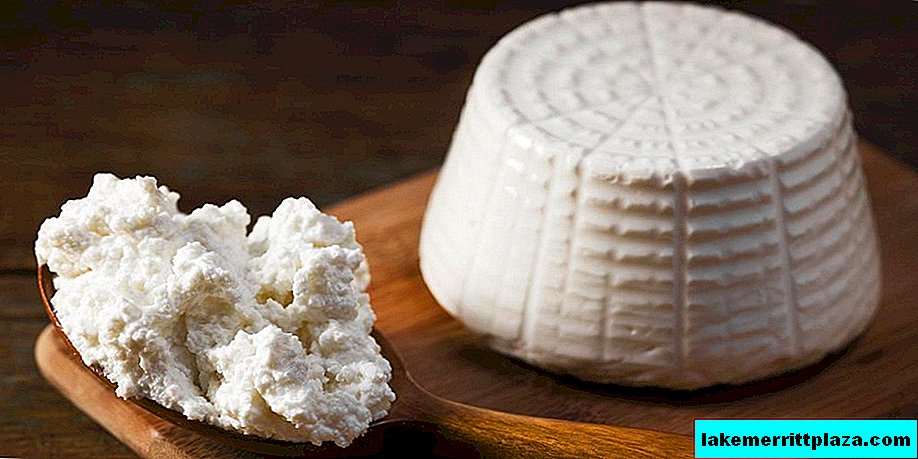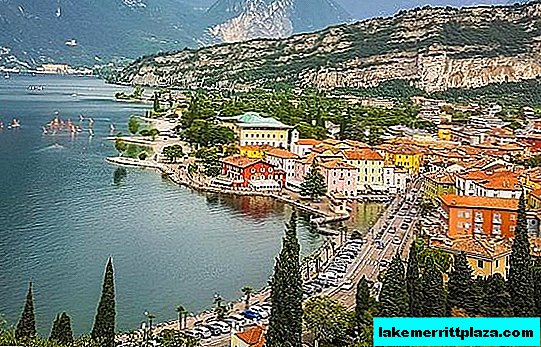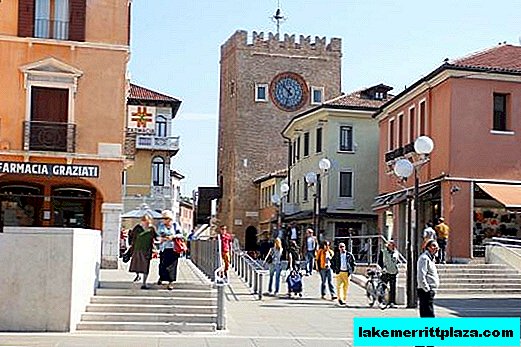Ravioli (Ravioli) - mastodon of Italian cuisine. And although for us it is, rather, foreign dumplings, Italians position them as a type of pasta with filling.
But in any case, the dish is popular all over the world. In various regions of Italy, it has its own "twin cities." For example, in Piedmont - Agnolotti, in Mantua - Tortelli, and in Romagna - Cappelletti.
Most often, ravioli is made square. There are also round and semicircular options. The many faces of food is not only in appearance. It is famous for its diverse fillings. And, if for our dumplings the traditional version is meat, the Italian classic is ricotta with spinach. How to make dough for a foreign delicacy, what other fillings are there and much more you will learn by reading the article.

Story
At the dawn of the Middle Ages, the most popular product of the gastronomic culture of Italy was born - stuffed pasta. Ravioli, tortellinni, cappelletti and its other species are united by one story.
The first mention of a new dish dates back to the 12th century. It is believed that in Bologna during the Christmas holidays it decorated the tables of the richest families.
There is a beautiful legend that says that during one of the battles between Bologna and Modena, Bacchus, Mars and Venus descended from Olympus. After fierce fighting, the deities stopped at the Corona di Castelfranco hotel exactly in the middle between the two warring cities. The owner of the institution, unable to resist temptation, watched the sleeping Venus. Fascinated by her beauty, he decided to embody the shape of her beautiful navel in the test.
The term ravioli, apparently, derives from the combination of the words "robiola" (soft cheese) and "rapa" (turnip). In ancient times, the main filling of stuffed pasta was a mixture of soft cheese with turnip leaves.
Delicious food could not ignore the Italian poet Giovanni Boccaccio. In one of Decameron’s short stories, the heroes are in a land of plenty where people do nothing except sculpt ravioli and cook them in capon broth.
It is impossible to say exactly where and when the recipe for pasta with filling appeared, who is its author. But there is no doubt that the birth of ravioli is a real gastronomic miracle.
Filling Pasta Options
Not all versions of pasta with filling are called ravioli. In different regions of Italy you will find your version of the product. They differ in shape, size and filling options. But sometimes the same dishes are known by different names, even within a radius of several kilometers. We will list the most common formats of stuffed pasta:
- Anolini (Anolini) - a crescent-shaped dish typical of Parma (Parma) and Piacenza (Piacenza). They are stuffed with stewed beef or fried pork with parmesan, eggs, nutmeg, salt and pepper. Traditionally served in broth.
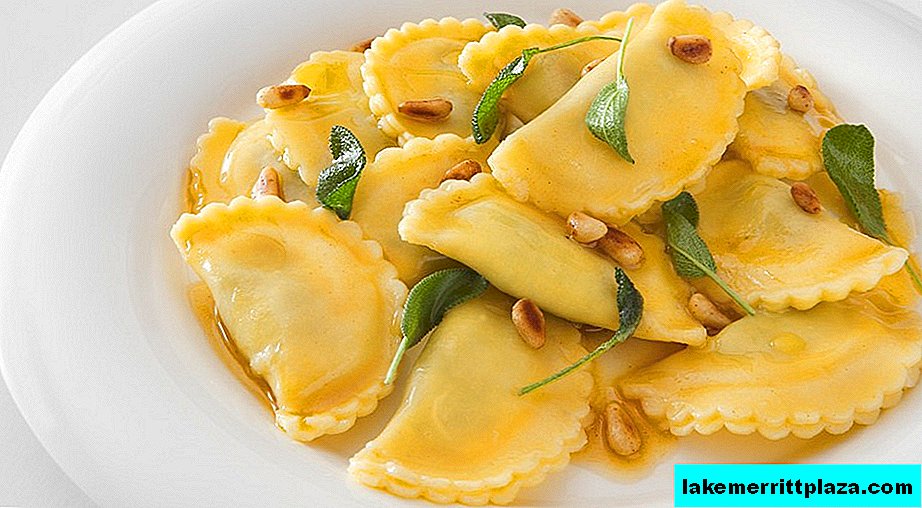
- Agnolotti - a square paste made from Piedmont (Piemonte). The main filling is various types of meat (stewed beef, fried chicken breast, fried rabbit, salsichcha, etc.). Typically, the meat base is supplemented with vegetables, parmesan, and nutmeg.
- Casoncelli is a typical dish for Bergamo and Brescia. They have a characteristic crescent shape. The main filling: meat with grains padano and herbs. In Brescia, filling is more popular: salsicia, bread, egg and cheese. Serve them, sprinkled with grated cheese and butter.
- Cappelletti (Cappelletti) - stuffed pasta of a special shape in the form of medieval men's hats. Typical of Emilia Romagna. Usually filled with cheese filling (parmesan, grana padano, robiola). Traditionally served with seasoning or in chicken broth.

- Cararnelle is a type of pasta characteristic of the Emilia-Romagna region. For the filling, ricotta with egg, spinach and grated parmesan is more often used. They have an unusual shape resembling candy in a candy wrapper.
- Mezzelune (Mezzelune) - a semicircular paste from South Tyrol (Tirolo). The dough is made from white or buckwheat. Typical toppings: ricotta, spinach or mushrooms. There are versions with meat, beets or cabbage.
- Ravioli is the most diverse pasta stuffed with. They are prepared square, rectangular, round, triangular, assembled in a "bundle". The fillers are also varied. For example, in most regions this is ricotta with or without vegetables, and in Liguria they prefer minced meat.
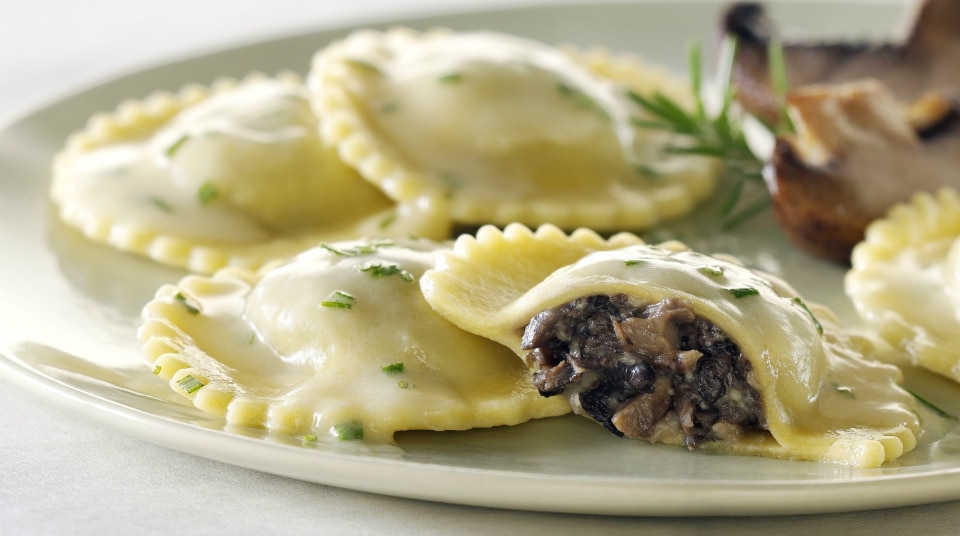
- Tortellini (Tortellini) - traditional for Bologna and Modena stuffed pasta. It resembles domestic dumplings, hand-molded in shape. A characteristic feature of this format is thin dough and a large number of fillings.
- Tortelli (Tortelli) and Tortelloni (Tortelloni) - pasta stuffed with the same shape as the tortellini, but larger. As a rule, they are stuffed with ricotta with leafy vegetables. There are options where the latter are replaced by porcini mushrooms or walnuts. Pumpkin pulp stuffing with amaretto cookies is popular in Reggio Emilia. Traditionally served tortelloni with melted butter and sage leaves.
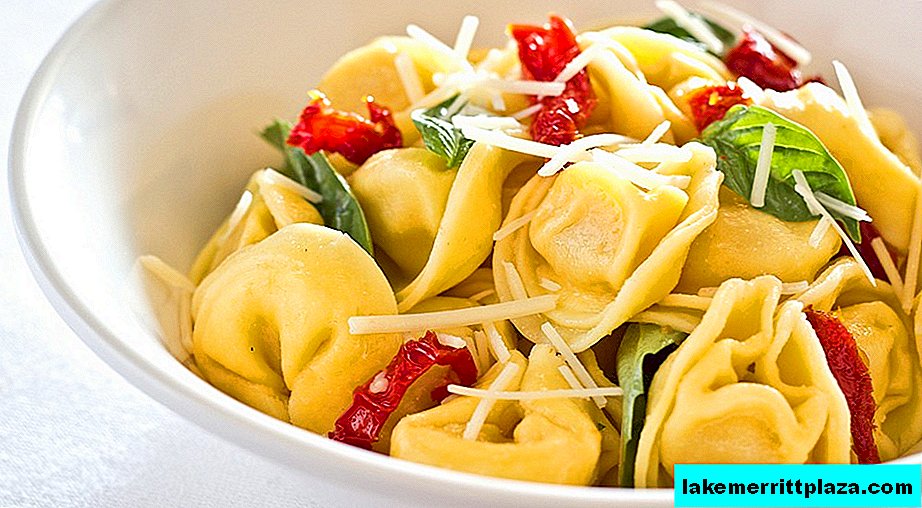
- Triangoli di pasta is the common name for stuffed pasta with various fillings in the shape of a triangle.
- Fagottini (Fagottini) - pasta with vegetables (stewed carrots, onions, green beans), ricotta and olive oil.
As you can see, stuffed pasta is popular in many parts of Italy.
Types of dough and toppings for ravioli
The type of dough for ravioli varies depending on the internal filling. A classic dough is prepared for the meat filling, in which the ratio is maintained: 1 egg per 100 g of flour.
Options with milder contents (ricotta, vegetables, fish) also require a soft paste using fewer eggs (6 pieces per 1 kg of flour). A sufficient amount of warm water is added to the egg-flour mixture to obtain an elastic dough.
Some non-standard types of ravioli are prepared using flour from chickpeas, chestnuts, buckwheat. In addition, the dough can be colored with vegetable juice (spinach, beets, tomatoes) or spices (saffron, cocoa). Coal-black paste is made by pouring cuttlefish ink onto the flour mass.
A huge variety of fillings, changing not only from region to region, but also from city to city, suggests that there are no general rules for filling ravioli. Moreover, the serving of cooked pasta can be carried out both with broth, and in an independent form. The only thing that a dish with meat or fish is preferably consumed without a liquid component.
Meat
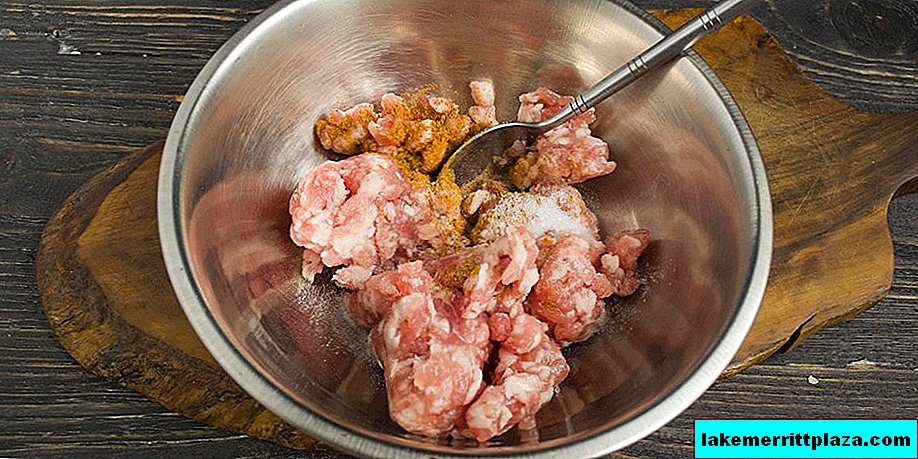
For filling ravioli, beef, pork, veal, meat of rabbits and birds are used. It is crushed and fried, stewed in whole pieces, made meat stew or baked in the oven. But, regardless of the preparation method, before stuffing the paste, such a filling is crushed and mixed with other components (egg, grated cheese, salt, nutmeg, vegetables) until a homogeneous mixture is obtained.
Vegetables
Like meat, vegetables also undergo various processing methods: boiling, steaming, frying or stewing. They are seasoned with spices and aromatic herbs. The past the first stage, the filling is crushed and combined with additional ingredients (egg, grated cheese, allspice, ricotta).
A fish

Filling ravioli with fish or seafood is one of the most modern filling options. Usually, the fish fillet is crushed and stewed in a pan with oil, wine and herbs. Additional ingredients include: egg, pepper, herbs, vegetables, cheese.
Seafood is often processed by frying, subsequently mixing with onions, vegetables or eggs.
Other species
In addition to the widespread, there are non-standard types of fillings: cheese (fontina, gorgonzola); pumpkin; based on spinach, raisins, chocolate and parsley (a filling called cialzons friulani).
Classic recipe
The classic and most common ravioli recipe is pasta stuffed with ricotta and spinach. Their fresh, delicate aroma is the eternal idyll of Italian cuisine.
Ingredients required for the dough:
- Wheat flour - 250 g;
- Eggs - 2 pcs.;
- Semolina for powdering;
- For filling;
- Spinach - 250 g;
- Ricotta - 125 g;
- Parmesan or other hard cheese - 50 g;
- Nutmeg - a pinch;
- Salt and black pepper to taste.
If you do everything strictly following our instructions, you will get 24 Italian dumplings at the exit.
The process of birth of ravioli begins with the preparation of the test. To do this, beat the eggs until smooth. Take 200 g of flour (leave 50 g) and pour the egg mass into it. Knead thoroughly with your hands.
If the dough turned out to be very elastic and tough, pour a small amount of warm water and knead again to an elastic, soft, not sticky state. If, on the contrary, the mass turned out to be too sticky, add the remaining flour in parts.
We form a ball from the finished dough, wrap it in a cling film and let it rest for about 30 minutes.
For the filling, we wash the washed spinach for several minutes under the lid in a non-stick pan. Until it softens.
Lean soft spinach onto a sieve to remove excess liquid.
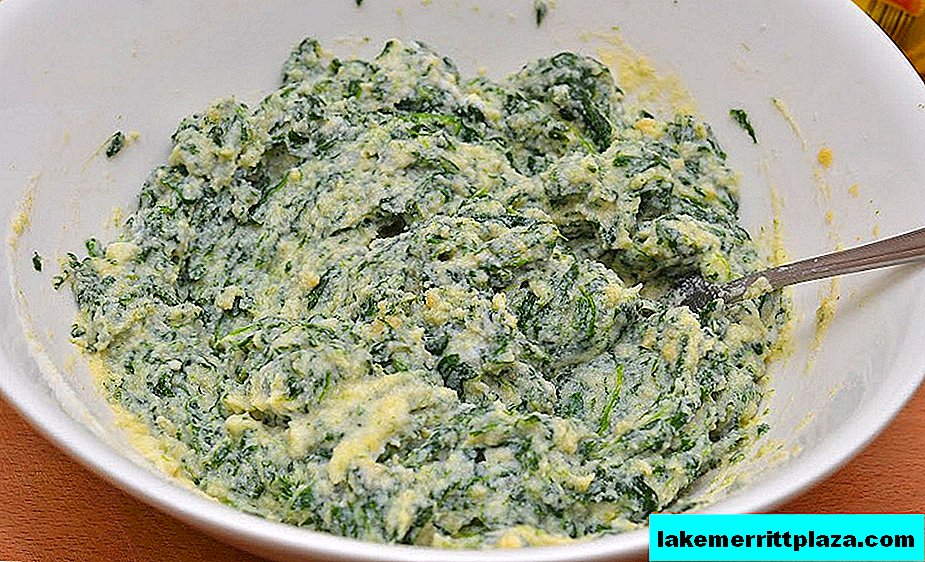
In a deep bowl, combine ricotta and grated hard cheese. Season with nutmeg, salt and pepper. Introduce the chopped spinach in a blender and knead well until smooth. Transfer the filling into a pastry bag and set aside.
On a machine for making ravioli or manually on a table sprinkled with semolina, we roll out a dough rectangle with a thickness of not more than 1 mm. We squeeze the filling from the pastry bag onto the formation at a distance of about 3 cm from each other.
The "islands" of the ricotta-free dough are greased with a brush slightly moistened with water or sprayed with a kitchen spray. This procedure contributes to better bonding of two layers of dough.
We lay on top of the second rolled layer. Using your fingers, slightly press the layers of dough between the filling to each other, squeezing the air. In this way, we will prevent ravioli from delaminating and filling leakage during cooking.
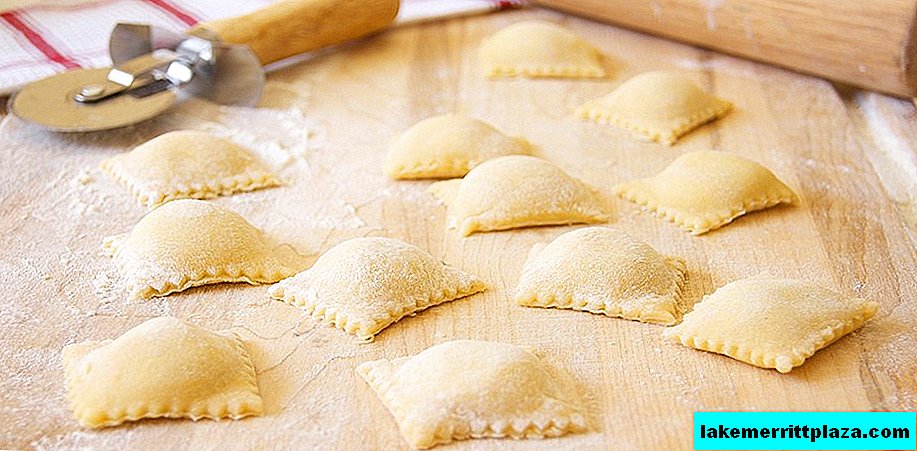
Using a circular knife with serrated edges, cut the layer into pieces with a side of 4 * 4 cm. Dip the ravioli in boiling water and cook until tender. Serve to the table, seasoned to taste (for example, butter and sage).
If you are not going to cook ravioli right away, send them to the freezer. Therefore, it is better to keep the delicacy no more than 1 month old.
- Those wishing to approach the issue more professionally can order on Ozon.ru a special machine for making ravioli.

Meat recipe
No matter how attracted by the classic, it is more common for domestic tables to feel dumplings with meat. We offer you a recipe for ravioli with mixed meat filling. However, you have the right to choose the type of filling at your discretion.
Essential Ingredients:
for the test
- Wheat flour - 300 g;
- Eggs - 3 pcs.;
- Semolina for powder.
For filling
- Fried beef - 150 g;
- Boiled beef - 70 g;
- Ham - 30 g;
- Cooked sausage - 30 g;
- Egg - 1 pc.;
- Grated hard cheese (parmesan) - 40 g;
- Nutmeg - a pinch;
- Salt to taste.
for filing
- Tomato sauce (ketchup) - 400 g.
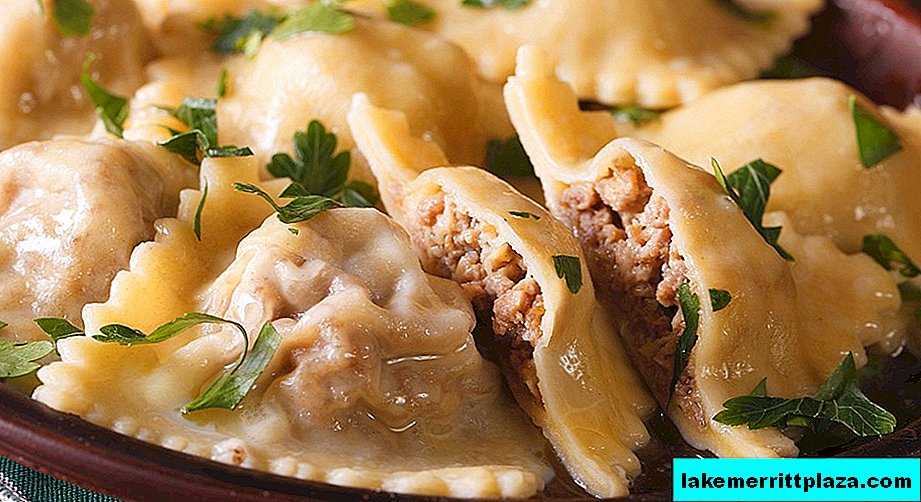
The procedure for preparing the dough for ravioli with meat does not differ from that described above. Therefore, we proceed immediately to the stage of filling formation. To do this, slice all the meat, ham and sausage. Add ½ portion of grated cheese, egg, nutmeg and salt. Knead well.
We form ravioli with meat in the same way as given in the classic recipe. Spread the filling with a spoon.
Cook in salted boiling water for about 10 minutes. To serve, season the hot dish with tomato sauce and the remaining hard cheese.
Calorie content and benefits
Not surprisingly, the classic ravioli recipe is very popular in Italy. After all, 100 g of such a dish contains only 149 kcalwhich consist of:
- Proteins - 8.9 g;
- Fats - 5.5 g;
- Carbohydrates - 17.1 g.
Ricotta is an excellent source of calcium, which contributes to the health of bones and teeth, participates in important processes of the human body. Spinach is a storehouse of dietary fiber that helps the digestive system function properly.
But, with all the pros, do not forget about the cholesterol content in food (58.2 mg per 100 g). Therefore, people with problems with excess weight and excess cholesterol should consult a doctor before enjoying the Italian delicacy.
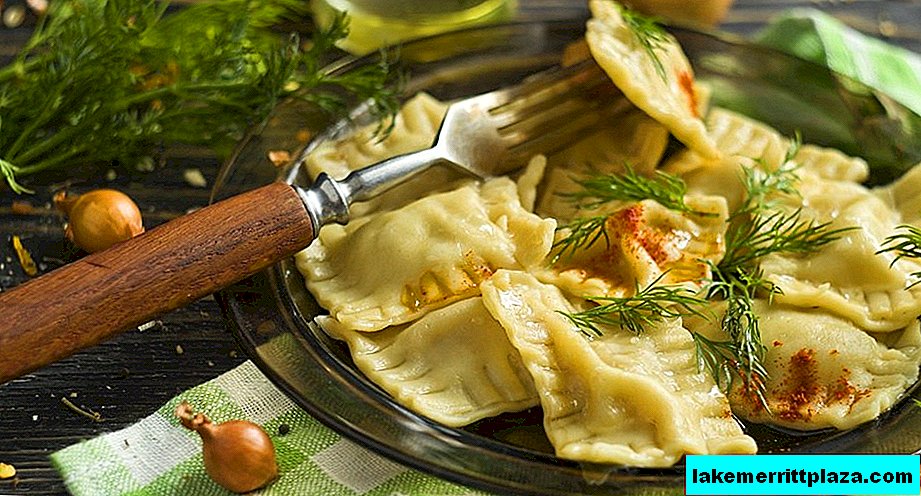
The total calorie content of the remaining types of ravioli is almost completely dependent on the type of filling. Meat options are of greater nutritional value, while fish and vegetable ones are of lesser value.
The article on "foreign dumplings" smoothly came to its end. We hope that now you dare to settle a little Italy in your kitchen. Live openly, love secretly, cook with joy and remember: "You can live on broths for a very long time if you boil ravioli!"


